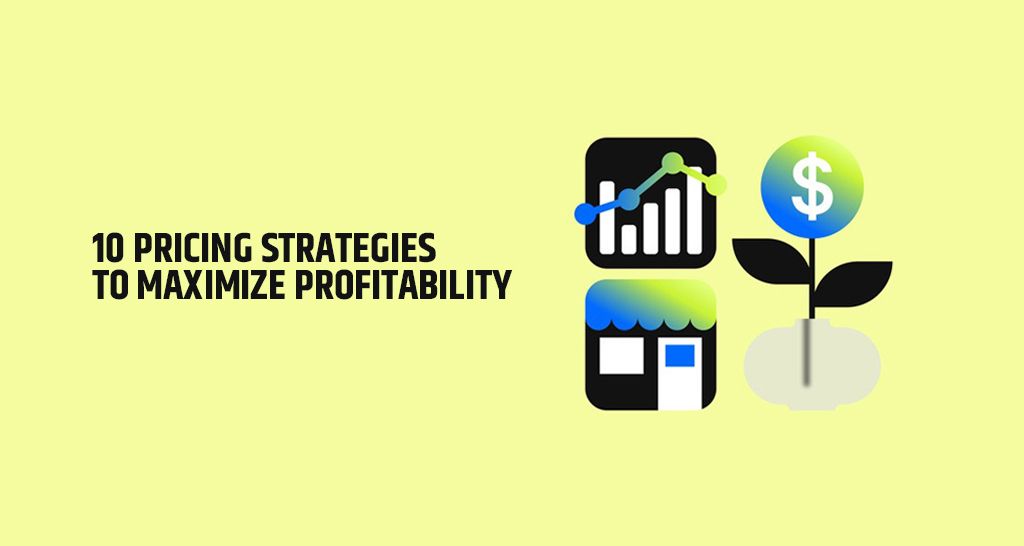Deciding the appropriate pricing strategy for your products or services is critical to running a successful business. Your pricing decisions can directly impact your profitability, market positioning, and customer perceptions. Knowing when to increase or decrease prices requires careful analysis of various factors, including customer demand, market conditions, competitive landscape, and cost considerations. In this write-up, we will explore different pricing strategies so you can set prices appropriately and gain profits. So, here are 10 pricing Strategies to Maximize Profitability.
Cost-plus pricing
Whenever a business focuses on recovering the production cost of the product, they use Cost-plus pricing. This is one of the 10 pricing Strategies to Maximize Profitability. It involves increasing the amount invested by adding a fixed percentage. For instance, if you invested ₹100 in making the product and want to profit from ₹100 on each sale, you can set a price of ₹200. Often, retailers selling physical products use this strategy, as their products offer greater value than the cost of creation.
Value pricing strategy
This pricing strategy concentrates on the perceived value of your product or service, usually with external factors in mind. Value pricing strategy asks you to consider how and how much customers will benefit from your offering while considering less easily quantifiable factors. Your prices and profits can fluctuate with a value pricing strategy. For instance, a swimsuit line carries less value in the winter — but it’s still a good strategy for generating demand throughout the year. This strategy is highly flexible and focuses on keeping customers satisfied, not just covering your cost of production.
Penetration pricing
Often, new businesses use this strategy while entering the market. Penetration pricing establishes comparatively low prices to draw customers’ attention from high-priced competitors and earn sales. The strategy can help increase market share and sales volume, leading to lower production costs and faster inventory turnover. Even though this strategy helps achieve short-term business goals but, depending on the business, it may not be sustainable for the long term. It can attract bargain hunters and those with low customer loyalty.
Price skimming
Price skimming includes charging maximum prices for new products and gradually reducing them to maximize profit and compensate for production costs. This strategy can work well if you sell products with varying life cycle lengths. Often, products go out of trend after a period, so you have limited time to gain your profit in the initial stage of the product life cycle. The price skimming strategy allows businesses to retain customer interest in the long term but may not always be ideal for populous markets.
Bundle pricing
When you sell two or more products or services at a single price, it is called bundle pricing. This is a great way to market products to customers who want to pay extra for multiple products. Cosmetic salons, beauty salons, restaurants, and retail stores often use this pricing strategy to boost sales as customers discover more products with this strategy and purchase additional products.
Premium pricing
Premium pricing is the process of establishing higher prices than most competitors in the market. This helps create luxury, perceived value, and quality. Companies selling exclusive high-tech products often use this pricing strategy, as customers pay a premium price if they have a positive brand perception. This strategy works mostly when users perceive the product as a premium one.
Competitive Pricing
If you are in a saturated market and want to stay competitive, then you can use this strategy. In this strategy, you set the product prices on par with all the other competitor products available. Here, the prices may differ slightly from the market rate but are ultimately within the range of prices set by the other companies. Often, customers compare the market prices, so charging competitive or slightly low prices can give you a chance to gain more customers.
Psychological pricing
When you have an intimate understanding of the target market, psychological pricing can be helpful. This pricing strategy involves studying consumer buying patterns to influence buyer decisions and make higher-value sales. Buy-one-get-one-free is the perfect example of a psychological pricing technique. This strategy can increase sales as it allows you to get direct customer attention.
Dynamic pricing
Dynamic pricing matches the current market demand, also known as demand or surge pricing. This is a flexible strategy used when prices fluctuate daily or even hourly. Airlines, hotels, and event management companies may use dynamic pricing based on market trends. It enables companies to shift prices to match customers’ willingness to pay.
Geographical pricing
Last but not least, geographical pricing is the process of charging product prices depending on geographical location or market. This strategy allows you to set prices according to local consumer interests, requirements, and preferences. When executing this strategy, conducting extensive research about local region-specific taxation laws and having a streamlined accounting process to ensure its success is essential.
Last Thoughts
In today’s competitive world, businesses need great pricing strategies to keep their profit margins high without reducing demand. If you have a solid
process for pricing each of your products or services, you can captivate your customers and make them loyal to your brand. This will also make you confident in your prices for what you sell. After you have your pricing down for your next launch, it’s time to market your product or service and get your customers to start buying.
